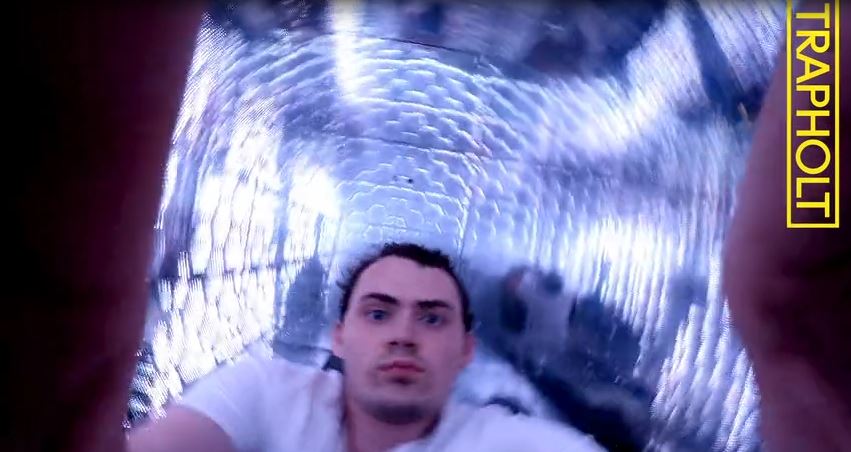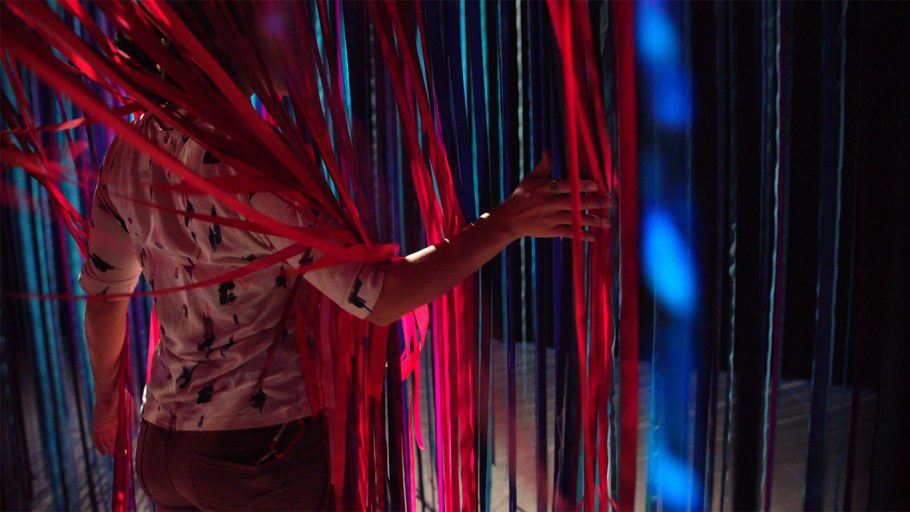Sense me
Test your own senses, taste a colour, put your head in the cloud, visit an artificial forest and lay back on a whispering ASMR tongue. SENSE ME investigates how our senses affect the way we perceive ourselves – and others.
The exhibition engages all of the visitor’s senses through large art and design installations created by leading figures such as Olafur Eliasson, Jeppe Hein, Anne Patterson, Margrethe Odgaard and Peter de Cupere. It also incorporates works by artists from the early twentieth century avant-garde, such as Wassily Kandinsky and Georgia O’Keeffe, who were all interested in the idea of the multi-sensory human being.

Listen to Trapholt’s SENSE ME podcast, in which museum director Karen Grøn, scientist Thomas Alrik Sørensen and five of the artists in SENSE ME talk about the complexity of our senses and art (in English). Follow this link to Soundcloud.
Watch the SENSE ME intro movie (English subtitles) when visiting Trapholt or in advance on Youtube.
In its exploration of how we sense the world, SENSE ME incorporates early twentieth-century art, contemporary art installations, designs and workshops. It presents works by avant-garde artists of the early 1900s, who ushered in a new spiritual connection between material, spirit and senses. Present-day artists and designers extend their explorations in spatial installations that incorporate sound, scents, taste, tactility, touch and body. Guests are invited to put their senses first, leaving reflections for later. We react instinctively to sensory input – but our responses may differ from those of others. Inspired by the phenomenon of ASMR (Autonomous Sensory Meridian Response), the exhibition has installations that invite you to explore how you are affected by whispering, crackling, crackling and rubbing sounds.

Gabriel Pulecio, Infinity (Tiles of Vitual Space)

Anne Patterson, Pathless Woods, 2017

Kaitlyn Hova, Synesthesia Light Show demo
The Danish ‘hygge’
The idea of multisensory input is not far removed from everyday life. In fact, the recently world-renowned Danish concept of ‘hygge’ can be seen as a multisensory situation that includes something good to eat, drink, listen to and sit in, as well as a special kind of lighting, a quiet pace and so on. SENSE ME presents the changing faces of Danish ‘hygge’ through the design of living rooms from the 1950s to the present day. From bar sets and sewing machines to huge sofas and flat-screen TVs onwards to intelligent homes and board games.
Workshops and interaction
The exhibition includes workshops that allow visitors to explore the connections between taste and colour, between storytelling and scents and between graphic design and taste. Guests can also take a test to see whether they are synaesthetes, that is, people for whom a specific sensory input, such as a sound, triggers an additional sensation in the form of a colour, shape, number or taste. It is estimated that one in ten people is a synaesthete.
SENSE ME challenges our habitual ideas what it means to sense the world. How do our senses affect our individual perceptions, including how we perceive others? It also raises our awareness of manipulative sensory inputs orchestrated by those who want to achieve something by subconsciously influencing our senses.
The artists featured include:
| Anne Patterson | USA |
| Barbara Martyna Golik | Poland |
| Eric Gunther | USA |
| Fillip Studios | Holland |
| Gabriel Pulecio | Colombia |
| Gentle Whispering ASMR | USA |
| Georgia O’Keefe | USA |
| James Wannerton | UK |
| Jeppe Hein | Denmark |
| Kaitlyn Hova | USA |
| Lauren Kalman | USA |
| Margrethe Odgaard | Denmark |
| Memo Akten | Turkey |
| Olafur Eliasson | Denmark/ Iceland |
| Olga Benedicte | Denmark |
| Omer Polak | Israel |
| Peter de Cupere | Belgium |
| Richard E. Cytowic | USA |
| Richard Mortensen | Denmark |
| Rudolf Steiner | Croatia |
| Sarah Hyndman | UK |
| Snoezel | Holland |
| Spectra Ensemble | Denmark |
| Vilhelm Bjerke Petersen | Denmark |
| Vincent Rouffiac | France |
| Wassily Kandinsky | Russia |
SENSE ME is part of a series of exhibitions at Trapholt that explore our personal world views. The first in the series was EAT ME in 2017.
Based on extensive research, SENSE ME is curated by the director of Trapholt, Karen Grøn, and curator Katrine Stenum Mortensen.
The exhibition has generously been supported by A.P. Møller Fonden and Spar Nord Fonden.


